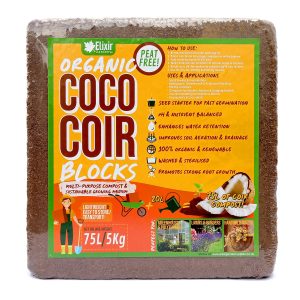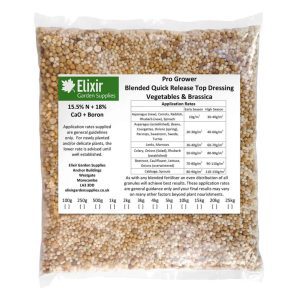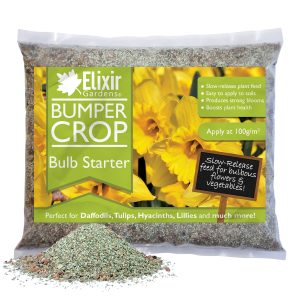How to:
Double Trouble
for Leeks
Leeks are a must have winter vegetable for many veg growers. But this year mine are in big trouble having been attacked by two of the major leek problems in the UK.
Rusting away
Leek Rust (Puccinia porri) is probably the most devastating foliar disease to affect leeks. It is characterised by the rust coloured pin head sized pustules which cover the leaves. In severe attacks it can almost completely defoliate the older leaves leading to poor growth and subsequent low yields. Many rusts survive and spread by using an alternative host species to produce ‘resting spores’. However it is thought that leek rust is able to survive solely on leeks due to leeks being grown for 12 months of the year in the UK. This ultimately this makes transmission from plant to plant a common problem.
Rusts are also so prolific it only takes a few leeks left in the ground in late spring to infect crops over a very wide area. The leek cultivar I have grown this year is ‘Philomene’, largely due to its robust upright growth. Its disease resistance has been very disappointing, and this is the second consecutive year my crop has become infected. My plan for next year will be to return to my tried and tested cultivar ‘Stamford’. This is not only very resistant to rust but it is also a vigorous grower. Even a late September planting will produce large leeks by the following March.
But rust is not the only problem for me this year. I first became aware of this relatively new leek pest only when I topped and peeled my freshly dug up leeks.


A minor problem
Allium Leaf Miner (Phytomyza gymnostoma) was first found in a garden in Wolverhampton in 2002. Since then it has spread and can now be found in most parts of the country. It has been in my own garden plot for about four years with some years being worse than others. Whilst tending to cause the most damage to leeks, the larvae also feed on bulb onions, chives, shallots and garlic. This year it has unfortunately excelled itself with damage to the leeks. Fortunately the onions have only some minor sporadic damage, with the garlic being totally unaffected.
Allium Leaf Miner is a persistent problem partly because it has two generations each year. The first generation eggs are laid in March and April, followed by a second generation laid between Septembers to November. As each generation of eggs hatch the larvae feed by eating the plant tissue in characteristic tunnels before pupating.
When lifting the leeks the 3 millimetre elongated brown pupae are easily seen in the plant tissue. Depending on when they hatch they will either form the second generation, or, overwinter to start the life cycle again.
Managing the problem
Onions that are sown or planted under fleece, as well as those sown in the greenhouse for planting in late April will benefit from some protection. I cover them with fleece for the first few weeks of growth which generally avoids them being attacked. This inexpensive solution provides a barrier against the adult leaf minor feeding and laying their eggs. Second generation damage isn’t usually an issue for onions as the crop will be harvested and stored before any second generation eggs hatch.
Leeks on the other hand are in full growth at the time the most damaging second generation starts to hatch. The plants growth is naturally slowing down as winter approaches which makes the pest damage more acute. Once the flesh of the vegetable is damaged it also becomes far more susceptible to various rots. Infected leeks will need to have several layers of leaves peeled away in order to find unaffected tissue. This is a significant problem on baby leeks as often the entire leek has to be thrown away.


Good housekeeping
Although there are currently no chemical controls for amateur gardeners to use, good plot hygiene will certainly help. It is really important that all allium leaf debris that could contain the pupae are disposed of in the green waste bin or burnt. You should also ensure that allium crops are rotated as there may also be pupae in the soil that could re-infect any following allium crop.
The adult leaf minors, which resemble tiny flies, are able to sniff out your prized leek crop from a considerable distance. By reducing the numbers overwintering it will undoubtedly reduce the following year’s population. I think there is now a real case to cover leek crops with horticultural fleece between September and November, in much the same way that carrots are covered to prevent carrot root fly.

I’m based in Shropshire, and I’ve been a keen gardener since childhood. Throughout my career I have raised plants commercially, landscaped gardens, taught horticulture, built the odd show garden and managed public parks where I helped popularise the use of wildflowers. My passion has always remained with growing fruit and vegetables in my own garden and looking after my rare breed chickens.
Chris

I’m based in Shropshire, and I’ve been a keen gardener since childhood. Throughout my career I have raised plants commercially, landscaped gardens, taught horticulture, built the odd show garden and managed public parks where I helped popularise the use of wildflowers. My passion has always remained with growing fruit and vegetables in my own garden and looking after my rare breed chickens.
Chris
Copy the code below for your 10% off discount:
ELIXIR10

Share This Blog
Featured Products
-

Fish, Blood & Bone | Multi Purpose Organic Fertiliser / Plant Food | NPK 5-5-6 | 25kg treats 360sq.m when applied at 70gsm
£5.99 – £40.99 Select options This product has multiple variants. The options may be chosen on the product page -

Woven Ground Cover with Optional Pegs & Staples
£4.99 – £139.99 Select options This product has multiple variants. The options may be chosen on the product page -

75L Organic Coir Compost Blocks
£12.39 – £169.99 Select options This product has multiple variants. The options may be chosen on the product page -

Bumper Crop Onion, Leek & Garlic Food | 5-19-10+3%Mg
£5.99 – £49.99 Select options This product has multiple variants. The options may be chosen on the product page -

Pro Grower Veg & Brassica | Blended Quick Release Top Dressing | 1kg treats up to 100sq.m when applied at 10gsm
£5.49 – £40.99 Select options This product has multiple variants. The options may be chosen on the product page -

Bathgate Champions Blend 50L Bags – Multiple Quantities Available
£20.99 – £229.99 Select options This product has multiple variants. The options may be chosen on the product page -

EX4 General Purpose Premium Fertiliser | 5-7.5-10 + Trace Elements | Covers up to 750m? | 100g – 25kg Supplied in Bag or Tub
£5.99 – £63.99 Select options This product has multiple variants. The options may be chosen on the product page -

Bumper Crop Bulb Starter | Root-Boosting Fertiliser & Bulbous Plant Feed
£6.49 – £58.99 Select options This product has multiple variants. The options may be chosen on the product page -

Bumper Crop Bulb Top Up Fertiliser & Feed
£5.99 – £49.99 Select options This product has multiple variants. The options may be chosen on the product page










